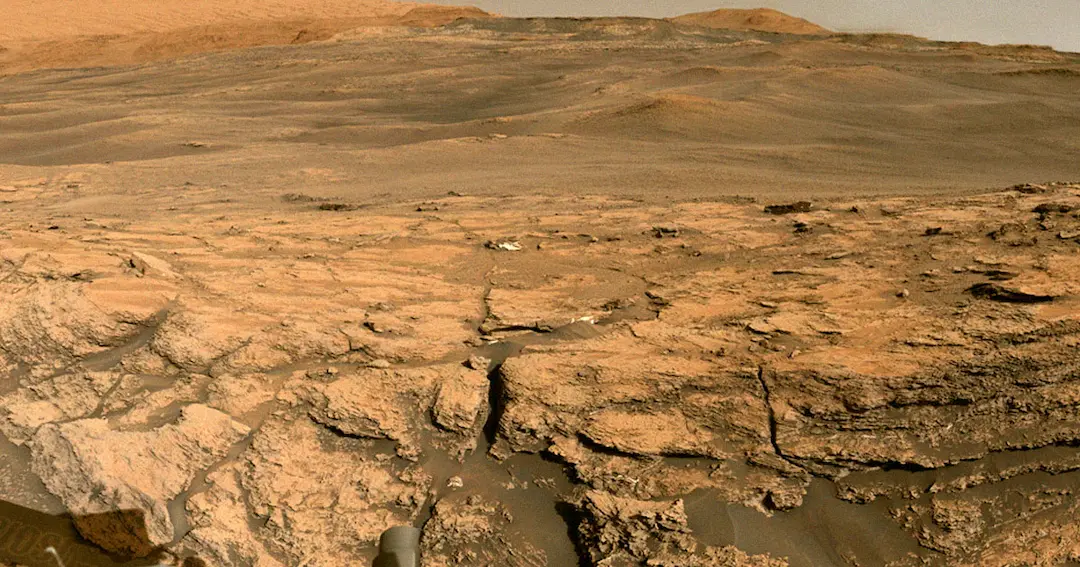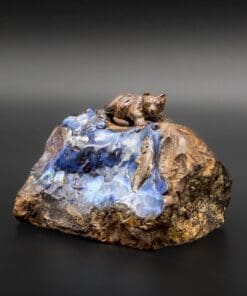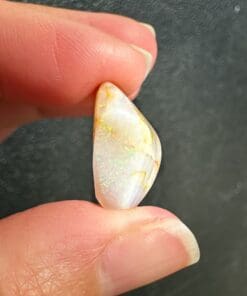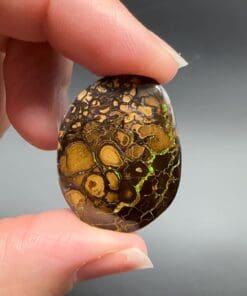Opal Gemstone Discovery on Mars: Further Evidence of Water on the Red Planet
NASA’s Curiosity rover has been exploring the Gale Crater on Mars for over a decade, investigating the site of a former lake that existed in the early days of the planet. Recent studies of images from Curiosity, both old and new, have revealed that the former lakebed contains enough underground water to form the semiprecious opal gemstone.
The discovery of opal gemstones on Mars has significant implications for the search for life on the red planet. Opals are formed by a solution of silica and water, which means that if enough water remained in rock fractures to form opals, life could have also persisted there. The presence of opal is also a sign that there is water on Mars, which is more precious than opals themselves.
-
 Blue Opal Carving: Boulder Opal Carving of a Bear Hunting Fish$345
Blue Opal Carving: Boulder Opal Carving of a Bear Hunting Fish$345 -
 Spencer Idaho Opal – Explore the Exquisite Beauty of this Unique Gemstone | Spencer Opal for Jewelry and Collecting.
Spencer Idaho Opal – Explore the Exquisite Beauty of this Unique Gemstone | Spencer Opal for Jewelry and Collecting.$88$79 -
Product on sale
 37ct Boulder Opal in Matrix – Koroit Opal – Australian Opal Cabochon
37ct Boulder Opal in Matrix – Koroit Opal – Australian Opal CabochonOriginal price was: $185.$125Current price is: $125.$113
The Mars Reconnaissance Orbiter detected the first hints of opal gemstones on Mars in 2008, but these early detections did not reveal the concentration level of “opal-like minerals” present on Mars. The Curiosity rover, however, has provided much closer views of a feature called a fracture halo, an area of lighter-colored material surrounding fractures in a rock surface. The lighter coloring of the halo is the sheen of opal.
Observations from the fracture halos showed that these fractures were widespread on the planet, and the subsurface fractures that the halos surround could be seen using the Dynamic Albedo of Neutrons (DAN) instrument. DAN readings showed that some of the neutrons detected have been slowed down by interacting with hydrogen atoms, a telltale sign of the presence of water.
Opal gemstones are formed in hot springs or on the seabed on Earth. On Mars, the open surface is hostile to life due to the radiation that kicks loose the neutrons detected by DAN. However, even a slight distance underground, such as in a rock fracture, conditions would have been far more benign. Life may have persisted there if enough water remained in the fractures to form opals.
The presence of opal on Mars could provide a boon for future missions. Although opal is technically not quite a mineral, and it does not have a rigid crystal structure, some of the water in it can be recovered with proper processing. Researchers estimate that a single square meter of fracture halo material, down to a depth of one foot, could contain a gallon and a half of recoverable water.
The polar regions of Mars are already known to be rich in water ice, and if recoverable subsurface water is widely available in equatorial regions of Mars, it could be a boon for astronauts during future long-term missions to Mars. Curiosity is still exploring the Gale Crater, and another NASA Mars rover, Perseverance, is currently investigating Jezero Crater, another ancient lakebed, with the mission now being adjusted to look for signs of fracture halos and opals.




